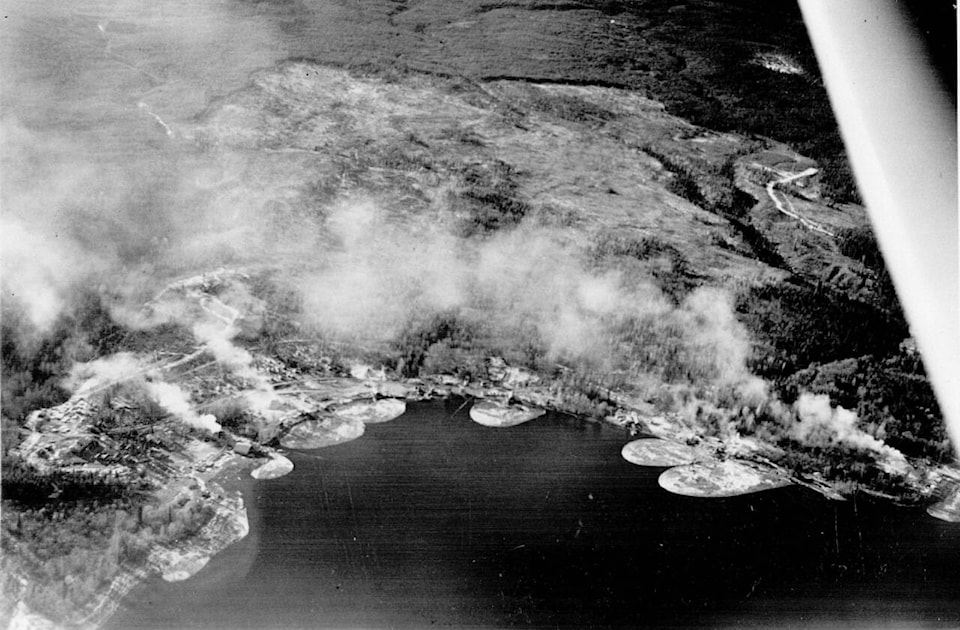Pendleton Bay on Babine Lake is a tranquil place today, but it was anything but quiet in the 1940s, â€ک50s, and early â€ک60s.
Named after a family that pre-empted land there around 1914, Pendleton Bay was a thriving forestry and First Nations community for decades. At one time, no fewer than nine sawmills, including at least one planer mill, operated near what is now the Babine Lake Marine Provincial Park. The forest industry was so active that the area rated its own BC Forest Service ranger station.
The sawmills and associated logging operations provided work for dozens of families. Many First Nations people seeking employment moved there from traditional communities along Babine Lake. Adam Williams, born in 1909, was one of them. He relocated to Pendleton Bay from Old Fort in 1955 and lived there for two decades.
Freighters transporting men and materials up and down Babine Lake also used Pendleton Bay as their base of operations. In the late 1940s, at the urging of local businessmen, the federal government built a large wharf to accommodate freight traffic on the lake.
In 1960, forty-seven people, most of them of First Nations descent, were registered to vote at the Omineca Electoral District’s Pendleton Bay Polling Station. The community had its own store (owned in part by Jack Brown Sr.) and cafأ© run by Dorothy (Dot) Saunders. Mail was picked up by “anyone going to راضقجىجأ Lake,†who brought it back for distribution to those living in the area.
For many years, there were enough families residing at Pendleton Bay to support a school. As late as 1963, the three-room facility had three teachers and approximately sixty students in grades one through seven.
Accommodations at â€کthe Bay’ were often crude. Edna Lautrup Konkin, who taught at Pendleton Bay in 1956, lived in a two-room teacherage overlooking Babine Lake.
“The rent was reasonable, $20 per month,†recalled Konkin years later. “The view was spectacular, the facilities primitive. My idea of running water became â€کgrab a pail and run fifty yards to the pump.’ The outhouse trip was an even longer run.â€
One evening shortly after starting her employment at Pendleton Bay, Konkin watched in amazement as a house floated past her home. “I couldn’t believe it and watched fascinated as it anchored just below the school,†she said. “It was eventually brought on land and put on a permanent foundation.â€
Former resident Rob Gilgan also has fond memories of the place. “I worked at mill at Pendleton Bay the summers of â€ک69 and ’70,†he said in 2021. “Lived in a house a hundred yards down the shore from the mill. Watched the sun rise every morning from the green chain. Best summers of my life.â€
Consolidation in the forest industry all but killed the community at Pendleton Bay. Sawmills that had supported dozens of families for decades were purchased by larger companies that concentrated production in more centralized communities like Houston and راضقجىجأ Lake. The people followed the mills.
Today, Pendleton Bay is still considered â€کhome’ by many First Nations families, but the majority of its residents are retired or seasonal occupants. The sawmills are gone and there are few signs of the community that grew up around them. Yet if you stand on the beach in late evening, you can almost hear the rip of head saws, the shouts of men piling lumber, and the laughter of children playing nearby.
آ© 2020 Michael Riis-Christianson and the Lakes District Museum Society



